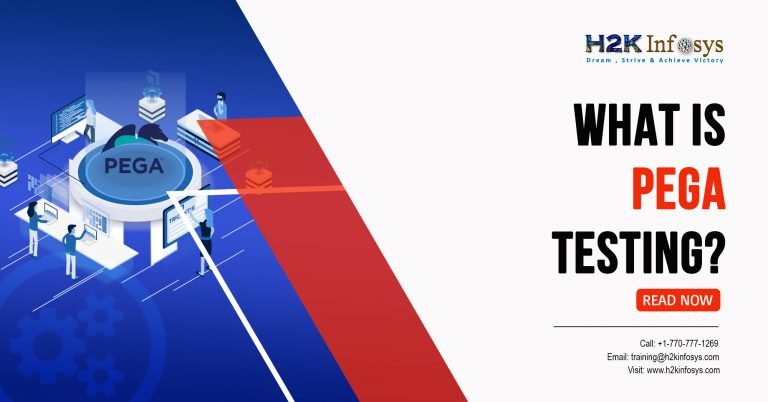Pega Testing is away from traditional testing practices. Let’s see how it is different. And, what makes PEGA a very good automation tool for testing? PEGA has a built-in feature which is known as PEGA Automated Unit Test or AUT. PEGA is a PRPC (Pega Rules Process Commander), which is developed, licensed, and marketed by Pegasystems. Its main functionality is automating the program code. Pega is developed using Java and OOP and essentially helps in building interfaces meant for business analysts, systems analysts, and developers. These interfaces are used to build applications in PEGA. As PEGA is closely associated with Manual Testing and Regressive Testing, we at H2K Infosys highly recommend QA online training, a comprehensive 100-hour instructor-led, live process training.
To automate the QA testing process, it is highly suggested for the analysts to break free of the traditional testing environment to PEGA testing.
What is PEGA?
PEGA is technically a Business Process Management (BPM) tool. These applications can then be deployed on intranet and web services thereby cutting the time and effort. This tool is widely spread in building applications in Finance/Banking/Healthcare industry.
Features of PEGA
- The biggest advantage of PEGA is that the developer needn’t build the applications from the ground up.
- The built-in framework of PEGA has a process monitoring dashboard from where the users will be able to see all the assigned tasks and dashboard reports.
- PEGA Tools help in deploying the applications at a much faster rate than Java-based applications.
- It offers a flexible and extensible programming environment.
What is PEGA Testing?
This is the testing performed on PEGA applications. The Testing Management Framework (TMF), Manual Testing, and Regressive Testing skills are mandatory for performing PEGA Testing. It is the perfect tool for performing unit testing.
By applying the PEGA Unit Testing feature to the PEGA tool, the users will be able to test the Decision Rules, Automated Regression Testing, Integrations, and Flow Rules.
The following rules can be tested using the latest Pega version. They are essential to improve the overall quality of the application.
- Activities
- Data Pages
- Flows
- When Rules
- Data Transform
- Case Types etc.
Now, where does AUT come into the picture? With the AUT, the rules are automated in such a way that any changes in the rules can be caught when they are re-run.
Apart from AUT, the following debugging rules are caught by PEGA
- Clipboard
- Tracer
- UI Inspector
- PAL/PLA
- DB Tracer
- SMA
The QA team performs testing in the Agile environment using the above-mentioned tools before reaching the development team so that the errors/bugs can be fixed effortlessly.
Being a Pega tester, they should know the following to be able to verify the application build.
- Operator ID rules
- RuleSet
- Access Group
- Worklist Concept
- WorkBasket Concept
- Service Level Agreements
- Declarative Statements such as Decision Table, Decision Tree..etc.
Career opportunities in PEGA
The demand for PEGA Testing is catching up in the job market. The requirement for PEGA testers is likely to improve by 200% going forward.
For the best QA training in the USA, check out our website www.h2kinfosys.com.































